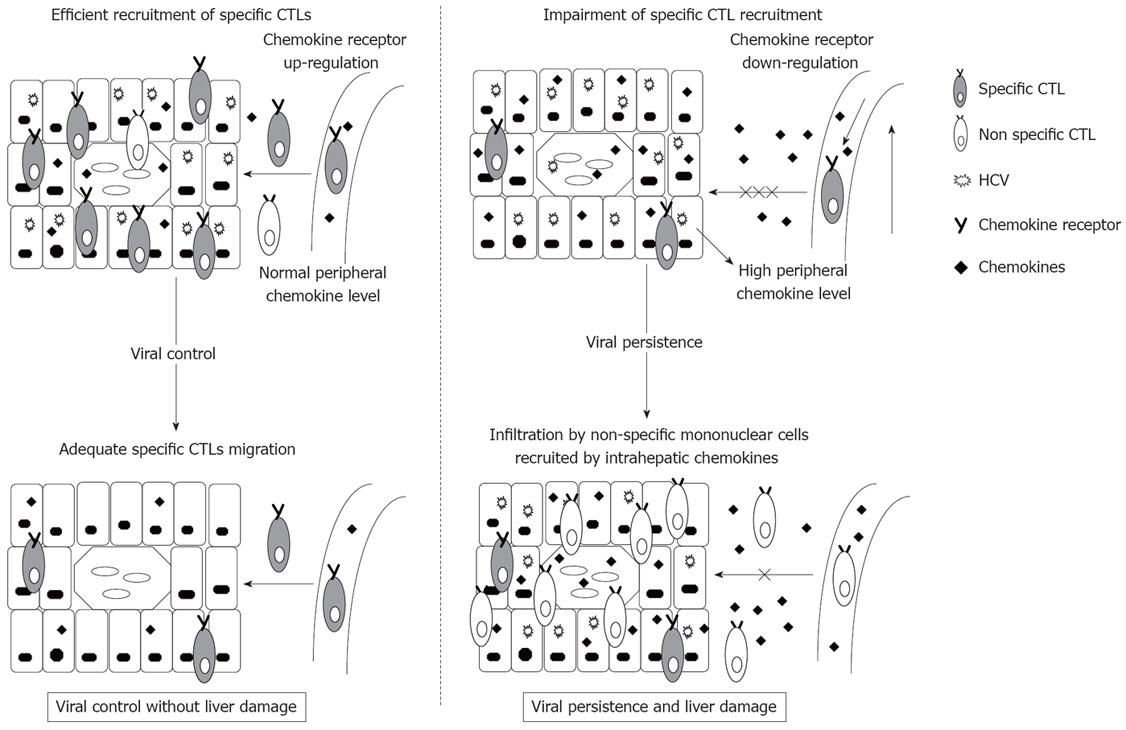Copyright
©2008 The WJG Press and Baishideng.
World J Gastroenterol. Dec 21, 2008; 14(47): 7149-7159
Published online Dec 21, 2008. doi: 10.3748/wjg.14.7149
Published online Dec 21, 2008. doi: 10.3748/wjg.14.7149
Figure 2 Different migration potential between resolved and persistent HCV infection.
In a resolved infection HCV-specific cytotoxic T lymphocytes (CTL) migrate rapidly to the infected liver, attracted by the chemokines produced by hepatocytes, succeeding in controlling HCV infection without liver damage. In persistent infection the migration of T cells to the liver may be impaired. High chemokine levels during infection may induce chemokine receptor down-regulation on T cells by molecule internalization. This mechanism could impair the migration of specific T cells during primary infection, which could inhibit HCV clearance. During the chronic phase, the persistent presence of HCV in the liver could keep a long-standing chemokine production, which could attract non-specific mononuclear cells to the liver, and be responsible for chronic liver damage. The relative migration impairment due to chemokine receptor down-regulation on non-specific T cells could modulate inflammatory infiltration of the liver, inducing chronic low-grade liver damage, which could favour host and virus long-term survival.
- Citation: Larrubia JR, Benito-Martínez S, Calvino M, Sanz-de-Villalobos E, Parra-Cid T. Role of chemokines and their receptors in viral persistence and liver damage during chronic hepatitis C virus infection. World J Gastroenterol 2008; 14(47): 7149-7159
- URL: https://www.wjgnet.com/1007-9327/full/v14/i47/7149.htm
- DOI: https://dx.doi.org/10.3748/wjg.14.7149









